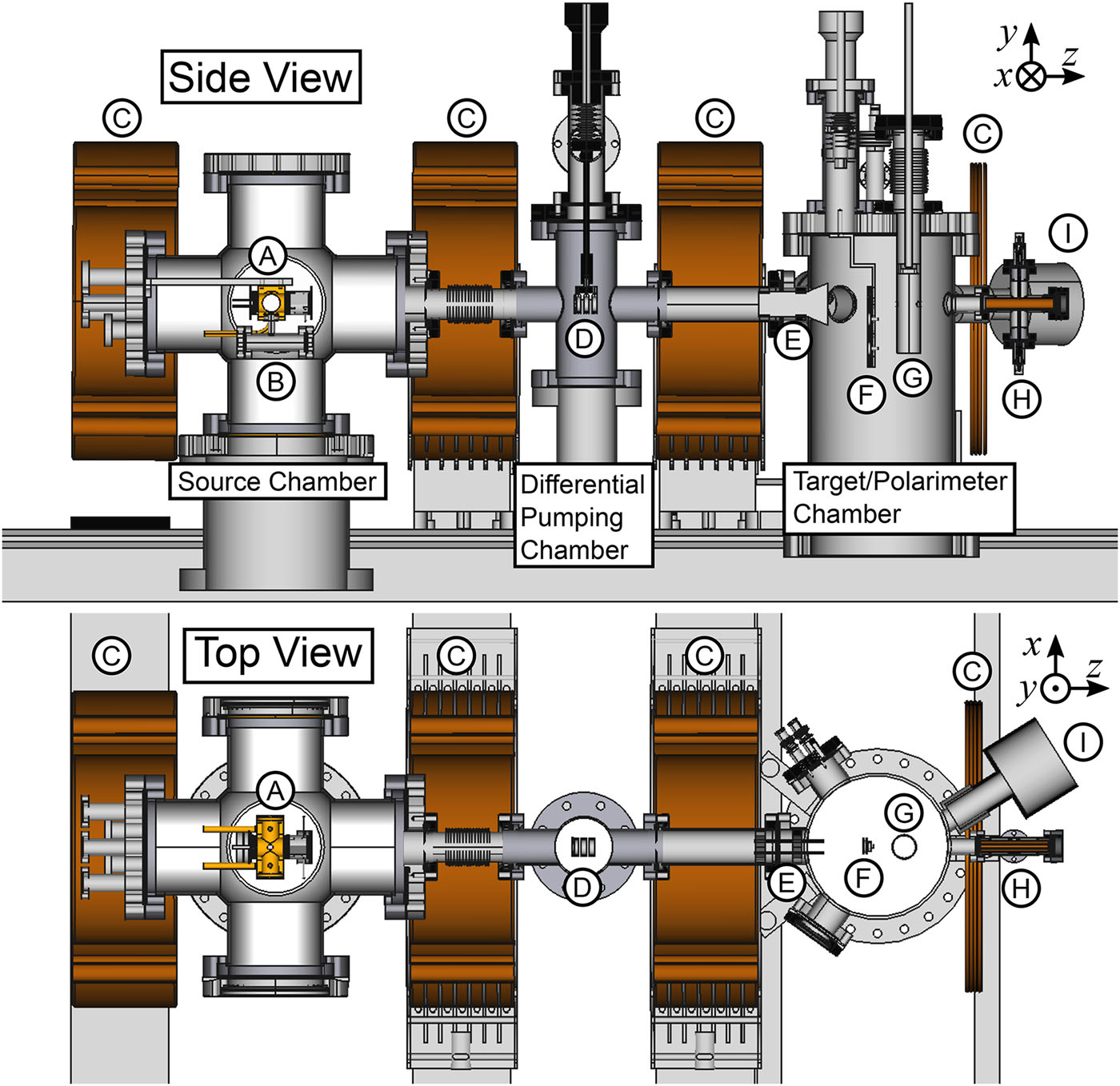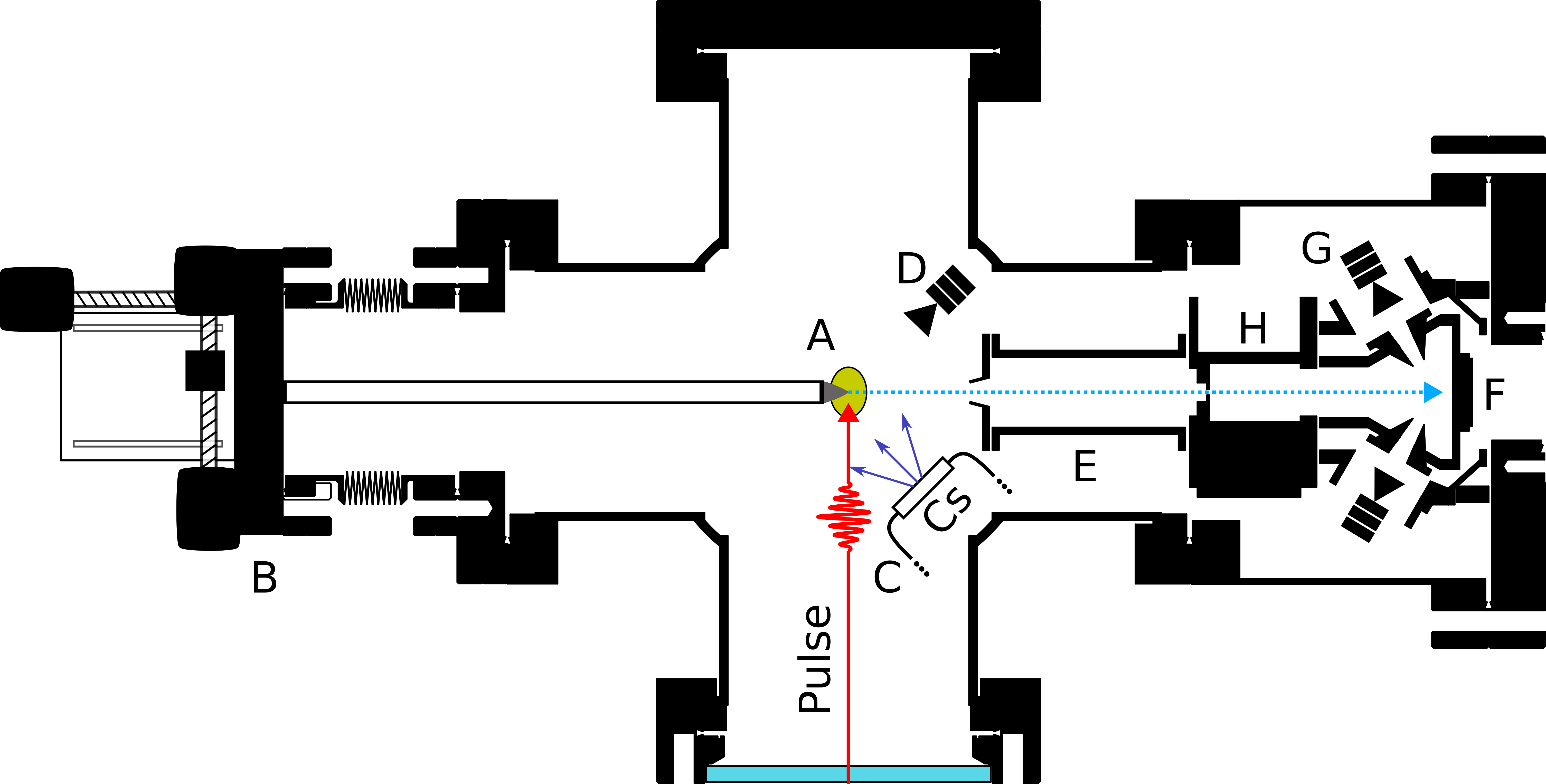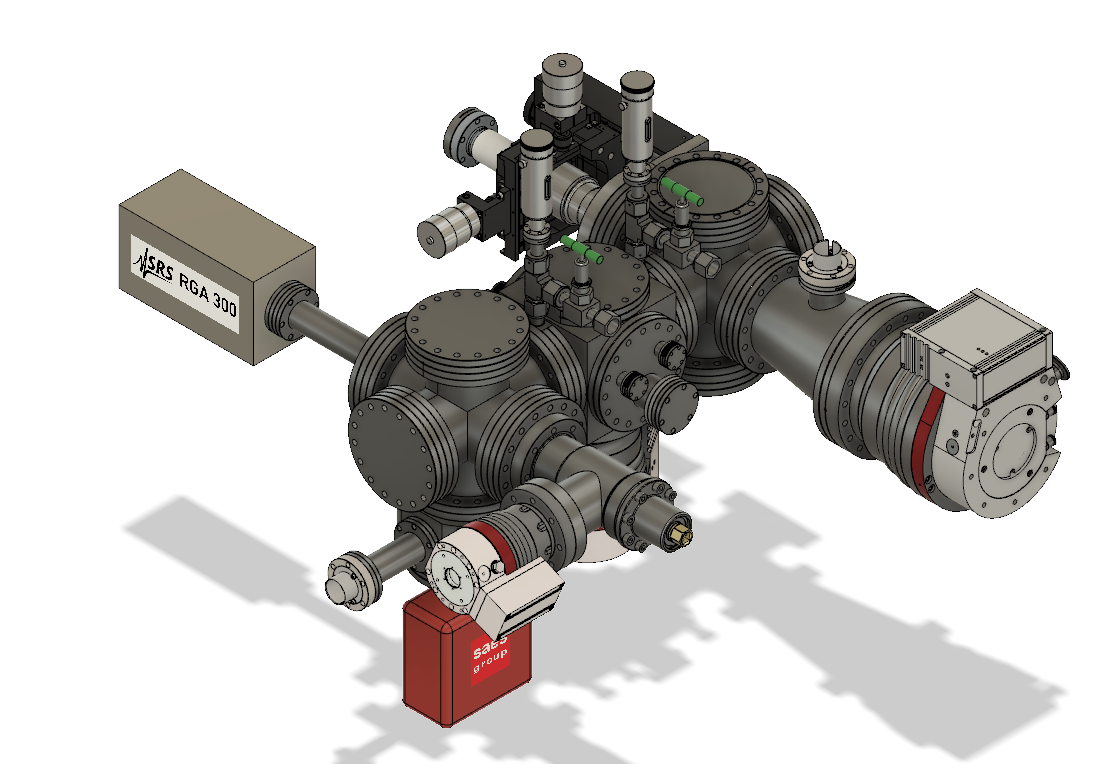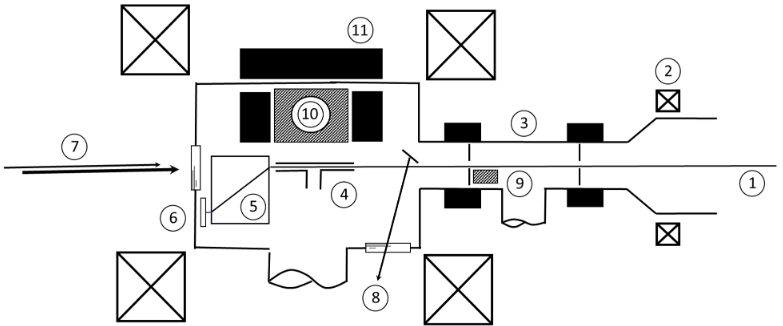Projects
Our research program uses polarized electrons to study spin-dependent effects in electron scattering from atomic and molecular targets ranging from amino acids to H2 to Ne. Such experiments provide a more detailed picture of collision dynamics than measurements with unpolarized electrons and are indispensable for studies of spin-dependent collisions involving chiral targets . We also explore ways of producing fast, pulsed sources of polarized electrons using multiphoton emission from nano-structured sources under modest (10-7 Torr) vacuum conditions, which could play an important role in basic and applied physics from fermionic Hanbury Brown-Twiss experiments to time-resolved studies of magnon dynamics on femtosecond time scales. Our group has three main research goals:
1. Studies of Electron Polarization in Collisions with Chiral Molecules. We study how chirality affects the interaction of longitudinally polarized (chiral) electrons with handed molecules. While symmetry permits such effects, the underlying collision dynamics are poorly understood. Our recent observation of spin-dependent dissociation of chiral halocamphors provided an important validation of the Vester-Ulbricht hypothesis, which seeks to explain the origin of biological homochirality. This is one of the most fundamental questions in science. We now plan to study targets with more biological relevance, such as selenocystine, and search for polarized electron production in unpolarized electron impact ionization of chiral molecules.
2. Studies of Fast Polarized Electron Emission from Metallic Nanostructures. We have shown that femtosecond light pulses can emit pulses of spin-polarized electrons from GaAs tips, and that these electron pulses are fast, i.e., having a duration comparable to that of photon pulses. Importantly, these electrons are produced without the requirement of a GaAs surface with negative electron affinity, meaning the operation of the source is very simple. We will now study other, more exotic types of fast nanostructured photocathodes: bulk GaAs overlayed with nucleated metal nanodroplets, current-carrying tungsten tips containing spin-polarized electrons produced by the spin-Hall effect, and chiral “nano-pigtails” grown from high-Z metals, e.g., Pt. These experiments will bridge a gap between bound-state spintronics and free-space beams of polarized electrons.
3. Threshold Studies of High-Energy-Resolution Electron Excitation of H2, O2, and Ne. We recently observed H2 excited electronic states near their excitation thresholds that were oblate. This is the opposite of the atomic case, where prolate excited states are required by angular momentum conservation. Close-to-threshold excitation is difficult to describe theoretically because of the strong coupling between the continuum electron and the nascent excited state, but state-of-the art theory has now verified our result. Using a newly developed apparatus, we propose to study near-threshold processes in H2 and O2 targets with 50 meV energy resolution, thus providing stringent tests of newly developed theoretical approaches, and the first results for O2 triplet-ground-state excitation by polarized electrons. We will also study near-threshold excitation of Ne, which is important for accurate electron optical polarimetry (AESOP), our proposed absolute quantum standard for electron polarimetry.





